|
Chinstrap Penguins on iceberg, Coronation Island, South Orkney Islands. This image was created with the Canon 100-400mm IS L zoom lens (hand held at 180mm) and the EOS-1Ds Mark II. ISO 400. Evaluative metering +1 2/3 stops: 1/1600 sec. at f/8 in Av Mode. For a greater appreciation of the image, click on the photo. Then click on the enlarged version to close it. You can order this image (as well as any BAA image) as either a canvas or a traditional print for your home or office here. |
Canon EOS-1D X Revelations
When I first heard that as presently configured the newly introduced Canon EOS-1D X flagship professional digital dSLR camera body would not AF beyond f/5.6 I was stunned. No autofocus with the 800mm f/5.6L IS and the EF 1.4X III telecovnerter. No autofocus with the soon to arrive 500mm f/4L IS II or the 600mm f/4L IS II and the EF 2X III teleconveter. Whew, that tough to hear. It seems that it is possible that this situation may be fixable either with a software update or with the addition of an additional custom function. (As a non-techie I am not sure that there is a great difference between the two possible solutions.)
In any case, I was thinking last night while on the edge of sleep that I had used a full frame digital camera for a year in 2004, the old dinosaur, the EOS-1Ds, and for two years during 2006 and 2007, the EOS-1Ds Mark II. Whew. I loved that camera. I just did a quick check on my 36 canvas print gallery images; nine were created with the full frame EOS-1Ds Mark II and of those, only two were with a big lens and the 2X teleconverter….
I still have not had time to take a really good look at the 1D X announcement to check out all of the great new features but a recent BPN thread on the new body had a link to Doug Brown’s blog. Doug one of out great moderators in the Avian Forum (along with Dan Cadieux, Randy Stout, Kaustubh Deshpande, Stuart Bowie, and yours truly). I followed the link and was quite impressed with the job that Doug did. Doug is one of the new-school 600mm/1.4X/Mark IV hand holding flight photographers. (Count me out of that club.) Doug is quite skilled at it; he garnered his first BBC Veolia Wildlife Photographer of the Year Competition-honored image in last year’s contest. (You can see Doug’s honored photo here.) And be sure to visit Doug’s web site here. Be sure to check out the various galleries; there is tons of amazing stuff in them. Reprinted below, with his permission, is Doug Brown’s take on the new EOS-1D X.
|
Bufflehead drake in flight. Image copyright 2011 and courtesy of Doug Brown Photography. Canon EOS-1D Mark IV, 600mm f/4L IS + 1.4x. ISO 1600: 1/1600 at f/5.6. Manual exposure, hand held. |
Canon Announces EOS-1D X Pro Body by Doug Brown
October 19th, 2011
Canon yesterday announced a new pro body, the EOS-1D X; it represents the fusion of the 1D and 1D s bodies. Highlights include an 18 MP full-frame sensor, superior high ISO performance, an all-new AF system, improved white balance and metering, a 12-14 fps shooting speed, and dual CF card slots. With all of these new and enhanced features, the price has moved up significantly from the 1D Mark IV’s price point; $6,800 to be exact.
The new autofocus system has 61 AF points, compared to the Mark IV’s 45 points. More importantly, with an f/4 lens, 41 of the 1D x’s 61 focus points are of the more sensitive cross-type variety (all but the black focus points below). In contrast, on the Mark IV only a single focus point (the center one) is cross-type with an f/4 lens. If you put a 1.4x extender on your f/4 supertelephoto lens (resulting in an f/5.6 maximum aperture), 21 of the new body’s focus points remain cross-type (the focus points in the red box below). The Mark IV drops to zero cross-type points. Five points in the center have additional AF sensitivity when used with an f/2.8 or faster lens (the column of 5 blue points in the red box). Here are a few other enhancements to the 1D x’s AF. The AF coverage area is expanded on the left and right of the frame, there is improved low-light and low-contrast AF performance, and both color and face detection can now be incorporated into the AF algorithm. Canon claims that AF can now be achieved when shooting in moonlight. I think we’re going to see some definite real-world AF performance improvement, and I’m looking forward to putting this new body through its AF paces.
|
This diagram shows the AF point configuration for the new Canon EOS-1D X. |
I should also mention that access to AF features is greatly enhanced in the 1D x; the camera borrows some excellent features from the 7D. Canon added a multifunction button to both the horizontal and vertical controls; that button can be used to choose the AF point selection mode (spot, single point, single point with surrounding 4 points, single point with surrounding 8 points, zone selection, and automatic AF point selection). These selections can now be made without taking your eye out of the viewfinder; previously you had to go into one of the custom function menus on the rear LCD screen to make these changes. Spot AF was fairly clumsy on the Mark IV, but couldn’t be easier to select on the 1D x. Autofocus functions now have their own menu tab, no longer appearing as a custom function submenu; descriptions and examples of each menu item are displayed on the LCD.
|
This diagram shows the AF Area Selection Modes. (Note: these modes will be similar to those offered on the EOS-7D.) |
High ISO performance is reported to be 2 stops better than the Mark IV; if true this opens up a new world to bird photographers using Canon gear. I have no doubt that Canon had the Nikon D3s in its sights when it designed the 1D x. I have high hopes that the 1D x will outperform the D3s with its high-ISO noise levels. Dynamic range is also said to be wider than before.
White balance accuracy has been significantly improved, especially when photographing portraits and sunsets, and when photographing under low color temperature light sources. Metering zones have been increased 4x, from the Mark IV’s 63 to 252 in the 1D x. The metering system is now able to detect both color and the presence of faces in a scene. For those of you who like to microadjust your lenses, Canon has a few new feature for you. You can now set microadjustments for both the wide angle and telephoto focal lengths of your zoom lenses. If you have multiple copies of the same lens, the microadjustment tool now stores settings by lens serial number. The viewfinder has identical specs to the 1Ds Mark III, but they’ve added a translucent LCD screen like the one found in the 7D. This new screen is built to withstand much colder temperatures than the 7D’s.
Canon has added a Quick Control button to the back of the camera that functions in the same way that the 7D’s does; camera settings can be quickly and easily viewed and adjusted from a single screen. There is a also a Custom Control screen that allows you to map functions to the various buttons on the camera, just like on the 7D. You’ll also find that there are now 3 available custom shooting modes (C1, C2, and C3). These allow you to memorize 3 commonly used groupings of camera settings. As an example C1 could be Av mode, one shot AF, spot AF, single shot mode, f/8, 1/1000, and ISO 400. C2 might be manual exposure, AI servo AF, focus point expansion, high speed drive, f/5.6, 1/2500, and ISO 800. With the push of a button all of these settings will be changed automatically.
There are many other new and improved features, but those listed above are some of the biggies.
The 1D X is an impressive camera body to be sure, but what are its drawbacks? Probably the single most important drawback is that the 1D x is no longer able to autofocus at f/8. This means that you won’t be able to use a 2x on the 400 DO, 500, or 600 and get AF. You can also forget about the 800 with a 1.4x. Many bird photographers are up in arms over the loss of this feature. There’s no doubt that it’s nice to be able to AF at extreme focal lengths, but in all honesty 99.99% of my images are taken with maximum apertures of f/5.6 or larger. If sacrificing f/8 AF results in a substantially higher keeper rate for my other frames, it’s a sacrifice that I’m willing to make (but I’ll be keeping my Mark IV, which does AF at f/8). Next up is the megapixel count of the sensor. An 18 MP full-frame sensor produces outstanding images when you can fill the frame with subject. But let’s say you want to crop your image down to APS-H size. You’ll be left with only about 11 MP, a sizable drop from the Mark IV’s 16 MP and closer to the Mark III’s 10 MP. People are concerned about the how the image quality will hold up to cropping, since the loss of the 1.3 ‘crop factor’ sensor is going to result in more cropping by bird photographers. I have precious little experience with full-frame bodies in bird photography, but the full-frame Nikon shooters seem to do pretty well with their 12 MP sensors. The 1D x has 50% more pixels than the D3s. The last issue that looms large is the price. I’ve never had a problem spending big bucks on quality glass because it holds its value over time. Camera bodies depreciate like cars do (fast and furious); this isn’t as important when the bodies are reasonably priced, but I won’t be too happy to see my $6,800 body lose $3,400 in value in 2 years.
I had planned on upgrading both my 500mm and 600mm lenses this year, but I’m now starting to question whether my 500 will see much use on a full-frame body. Thank goodness Canon put the new 600 on a diet and brought the weight down to that of the current 500; they also trimmed 3 feet off of the MFD of the 600, giving it the same close focus as the current 500mm lens. The EOS-1Dx will be available in March of next year.
|
Wood Duck drake in flight. Image copyright 2011 and courtesy of Doug Brown Photography. Canon EOS-1D Mark IV, 400mm f/5.6L. ISO 800: 1/1600 at f/5.6. Manual exposure, hand held. |
Thanks a stack Doug! I hope to see you at Bosque this year. BTW, after taking a closer look at the 1D X and reading Doug’s article it seems clear that not only is the new camera a fusion of the 1D and 1Ds series but that it incorporates many of the features of the hugely popular Canon EOS-7D as well.

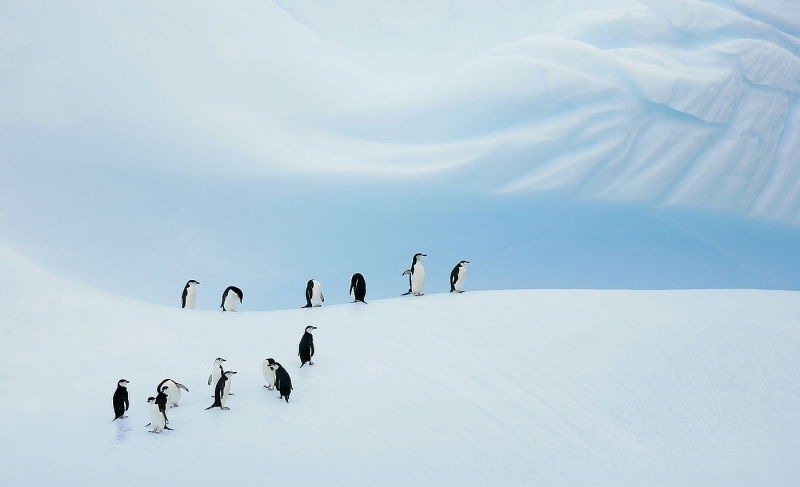
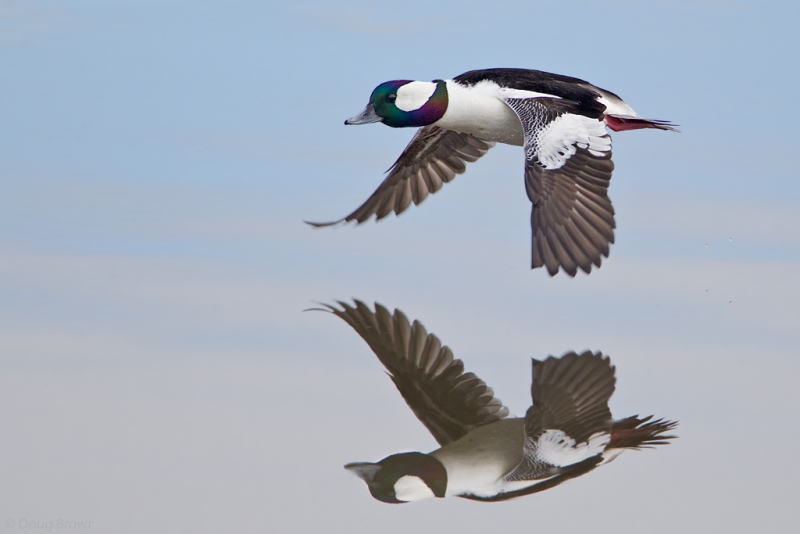
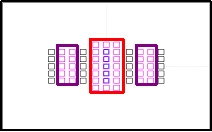
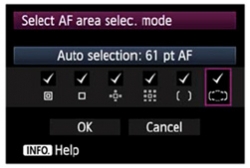
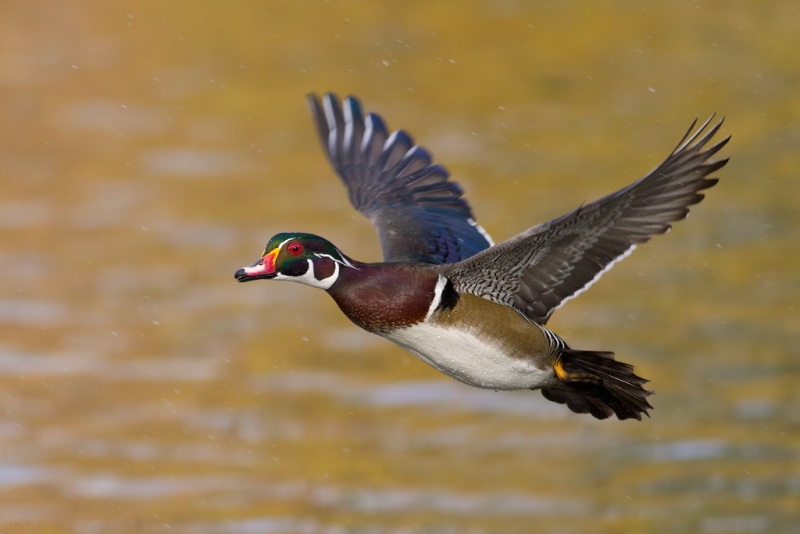













Canon is surprisingly quiet on the crop bodies. Of the 2 full frame bodies announced recently; 5D Mark III promises to be a good one with better focusing, noise free high ISO images and better weather sealing. The burst is rather slow however, faster than Mark II. If the last feature is ok; wildlife shooters might consider this full frame body. The first batch of any new model sometimes incorporates issues. So, interested customers should wait for its 2nd or 3rd batch production copies.
Hello Arthur
It has been decades!!!
For sure. Doing any bird photography? How is your lovely wife? Nancy ??? Ah, you gotta love senility. Are you still working your old job?
I think it’s better to get one 1D Mk IV, in case one doesn’t own one, before Canon stops its production. What will the wildlife photographers do from now on? If Canon doesn’t produce the 1.3 crop sensors any longer; they certainly will have to continue the 1.6 crop version because they have 4 models with that sensor size in the offering. So, may be the next update of 7D will have to be the choice of these photogs in future. Well, not a bad alternative.
I do agree. I own tow Mark IV bodies and am considering buying a third one… That said I used my 1Ds Mark II as my main body for two years and did just fine…
Apologies for the late response but I’ve been traveling. That penguin image is one of the best wildlife photos I’ve ever seen. It has such great balance. Well done Artie!
Many thanks David. It made the final round of BBC judging several times without any additional success :).
A good photographer can make great images using just about any equipment. The only thing I will add to this discussion is this: I spend a lot of time out and about trying to make the best images I can. Of course, I like to have every advantage available if possible. If you like to photograph subjects that aren’t stupid tame and do not let you get close, you can never have enough focal length. For this reason I really hope that Canon releases another camera geared more toward wildlife photographers. I *love* the 1D Mark IV but I truly believe the 1D X is a step backward for me in many respects, despite the new features that have been added. I generally believe in using “the right tool for the right job”. For me, the 1D X does not appear to be “the right tool”. We’ll see.
Artie: Thanks to you and to Doug Brown. Do you see the 1DX as a replacement for the 1D4? Do you think 12 (or even 14 fps) would make a noticeable difference over 10 fps? I guess if the AF is noticeably better and if the high-ISO preformance is noticeably better then maybe the 1DX will be a good replacement for the 1D4. You say your favorite ISO is 400, but if you could get images as clean with ISO 3200, would you use it more often? I would; I’d love to be able to use 1/8000 in less than bright sunlight sometimes. I very much look forward to reading your reviews. David
David, I do not see the 1D X as replacing the 1D IV. 12 fps will be a 20% increase over 10 fps :). Do realize that frame rate is slower when you are in AI Servo AF. (Or at least that is my understanding….) I would of course welcome improved high ISO performance. As I said previously, I will be purchasing a 1D X asap. artie
Artie, with all due respect to the organizers (and I really liked what they selected), but I have to say this penguin shot, in my opinion of course, shud have been up there somewhere…
Thanks KD. I agree. I entered it in the BBC and in several other contests several times. It made the finals of the BBC contest on several occasions, but alas :)….. There is a very interesting blog post on that same topic coming soon. artie
I’m still using the 1DS Mk 2 for my wildlife photography (the 5D mark 2 is my workhorse camera for my day job). I use the 2X an awful lot on my 500mm with great results. I’m sure I’m not alone in this. I could just about make a business case for the 1DX as a replacement for my worn out 5Ds and all my old 1 series bodies. But not if it won’t AF my favourite focal length. I’d be amazed if this issue isn’t fixed before launch.
As I said in the original post, good photographers make good images with whatever gear they have in their hangs…. As far back as ABP II I have been teaching folks that if they are not using the 2X TC with the 500 and 600 f/4L IS lenses that they are not reaching their full potential. artie
I have a great plan. I am gonna let you guys theorize and hypothesize. When the camera is released I will buy one, see how it works with and without teleconverters, and let everyone know. Then I will write a User’s Guide to teach folks how best to use it. artie
As Keith has commented, it may well be possible to tweak the firmware, but with poor results. Here’s what’s going on. Each AF point “looks at” a particular part of the image, but it also “looks through” only a small part of the lens – typically two widely separated parts of the aperture. The aperture limit for AF is determined by just where on the lens aperture the sensor “looks”. Canon will have set the smallest usable aperture so that it just barely allows the sensors to “look through” the edges of the aperture. As you stop down from that, the amount of light actually visible to the AF sensor diminishes rapidly, since it is now looking mostly at lens barrel instead of the external scene. No amount of firmware tweaking will change that, though it’s conceivable that at slightly smaller than specified apertures the AF could continue to produce some results. A careful study of the wikipedia article on autofocus will yield a lot of understanding of this issue.
Art, Bill, you could both be right.
It may well be technically possible to allow the 1Dx to AF at f/8, but Bill’s point is still valid: it might not be worth the trouble, because the compromises and lack of accuracy implied by letting the camera AF way beyond what the AF is optmised and designed for might make for very disappointing performance.
Remember that even the xxD bodies can be tricked into AFing at f/8 by taping the pins or using a non-reporting TC, but results are “mixed”, to say the least: and from the 40D onwards (up to and including the 7D) it’s really not worth the effort.
If a firmware tweak or custom function puts the 1Dx into the same compromise space that taped-pin prosumer bodies are in, it may well be better simply to leave well alone.
It seems unlikely that the required aperture for AF will change with a firmware update. The reason is that typical DSLR AF uses phase detection. If you think of the lens aperture as a disk, through which the AF sensor looks at the scene, the sensor is in fact looking through only two widely separated smaller disks within the full aperture. The separation of those two smaller disks gives what amounts to a rangefinder baseline. The farther apart they are, the longer the baseline, and the more accurate the possible focus. BUT their separation is limited by the lens’s maximum aperture. So there’s a tradeoff between accuracy of focus (long baseline) and the smallest aperture that the AF can work with. This is not something that firmware can fix. It’s a complete change of the AF system. There’s a good Wikipedia article on the subject at http://en.wikipedia.org/wiki/Autofocus, with a very instructive diagram showing the optical issues.
Though as I profess often I am not a technically knowledgeable person my understanding is that it would be rather easy to allow AF at f/8 via a custom function. artie
Hello
I am not sure about well understodd.
Off course this camera could open a new situation and no problem for professional people ..but for “normal” people”.
For those isn’t possible have both cameras (mark IV and 1dx)
For me , at the moment, mark IV is better because could be possible use Canon 500 f.4 and also the nv 2x; off course only sometimes but is is very sharp!
Another question: more crss point are very well but normally when I shot I use only central point and only sometimes more focus point.
Using 500 plus extender 1.4 with MarkIV is 910 with 1DX only 700…..more high iso isn’t a important new for birds because Mark IV is very good at 200 iso ..and more isn’t normally necessary…I think.
Bt if Canon decided so ..we will wait test about..
Giovanni, Professional photographers are as normal as everyone else, they just make a living taking pictures…. I have been teaching folks to use the 2X with the 500 and 600 f/4 lenses for well more than a decade. Best case with the 2X is that you have only the central sensor unless you are using an f/2.8 lens. (Your question was not a question…) My favorite ISO for the past eight years has been ISO 400. That’s why 95% of the images in the blog and in Bulletins say “ISO 400.” artie